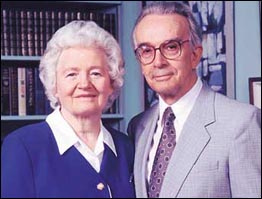 Since its publication in 1978, Dr. Carlton O. Wittlinger’s Quest for Piety and Obedience: The Story of the Brethren in Christ has been the authoritative history of the Brethren in Christ community.
Since its publication in 1978, Dr. Carlton O. Wittlinger’s Quest for Piety and Obedience: The Story of the Brethren in Christ has been the authoritative history of the Brethren in Christ community.
However, Dr. Wittlinger’s text is now thirty-five years old. In the intervening years, the Brethren in Christ community in North America has experienced monumental shifts. It has adapted to a variety of new leadership structures. It has developed multiple foreign missions posts and launched or restarted numerous congregations. It has split from a bi-national conference to two national conferences in the United States and Canada. It has overseen the development of an International Brethren in Christ Association. And it has navigated the increasingly diverse theological landscape of late twentieth and early twenty-first century America, among other challenges and transformations.
When Evangel Publishing House — the printer of Wittlinger’s denominational history — decided not to re-print the book a few years ago, the denomination commissioned Dr. E. Morris Sider to write a new denominational history.
Of course, readers of this blog will know that Dr. Sider is eminently qualified to write this new denominational history. For more than forty years, he has produced a voluminous amount of scholarship on the Brethren in Christ community,
Recently, the Newsletter of the Brethren in Christ Historical Society caught up with Dr. Sider for an update on his current writing project.
Here’s an excerpt from the interview:
The new history is intended to accomplish these objectives:
- Bring Brethren in Christ history up to date. In the thirty-five years since Quest for Piety and Obedience was published, much has happened that ought to be reflected in a history of the denomination.
- Use information from the significant amount of research and writing that has been done since 1978.
- Be more user-friendly than some consider Quest to be. For example: the new history will be about half the length of Quest; written in a more popular style for easy reading by the average person; contain stories, short biographies and color photos; and use a minimum of footnotes or endnotes.
. . . [Dr. Sider] is clear that his book will not replace the Wittlinger text. Quest will remain the standard history of the denomination, with its “almost encyclopedic information” being indispensible to serious students of denominational history. Since Quest is available, Morris can write a smaller book, and for those who want to know more, his book will refer them to Quest. Discussion continues on whether and how to make Quest available online — as a searchable PDF file, for instance.
To read the whole article, click here.

The big question to answer: what — if any — interpretive paradigm will govern the “new” portion of Sider’s book? Wittlinger saw the first 200 years of Brethren in Christ history as a “quest for piety and obedience.” He saw the church as attempting to hold in creative tension two competing emphases: the individual conversion experience emphasized by the Pietist strand of the tradition, and the emphasis on life-long, daily corporate discipleship mandated by the Anabaptist strand.
Has the Brethren in Christ Church in the last thirty-five years been on the same “quest”? Or have other emphases and issues preoccupied the Brethren in Christ “mind” in this era?
Recent decades have seen a resurgent interest in the identity of the Brethren in Christ. What makes us Brethren in Christ? What does it mean to be Brethren in Christ? Are there particular practices or beliefs that define our community? And how do the “streams” of our heritage — Anabaptism, Pietism, Wesleyanism, and Evangelicalism — shape our sense of vision and mission? Books like Focusing Our Faith have sought to answer these questions by focusing on “values” at the heart of the Brethren in Christ experience. Other studies have looked at elements as varied as revivalism, Christocentrism, and the “openness to truth” as hallmarks of the Brethren in Christ identity. [1]
Will Sider wrestle with the implications of these studies? I see each as defining new lenses by which to look at the Brethren in Christ and their transformation over time. I’m excited to see what direction this new history takes.
—
NOTES:
[1] These studies include David Zercher, “Is There a ‘Brethren Mindset’?: Reflections on the Alderfer Thesis,” in Reflections on a Heritage: Defining the Brethren in Christ, ed. E. Morris Sider (Grantham, Pa.: Brethren in Christ Historical Society, 1999), pp. 150-173; John R. Yeatts, “Why Is Our History Important?: The Significance of the Brethren in Christ Tradition for the Twenty-First Century,” Brethren in Christ History and Life 35, no. 2 (August 2012), pp. 321-330; and Owen H. Alderfer, “The Brethren Mindset: The Way of the Brethren,” in Reflections on a Heritage, pp. 134-149.
